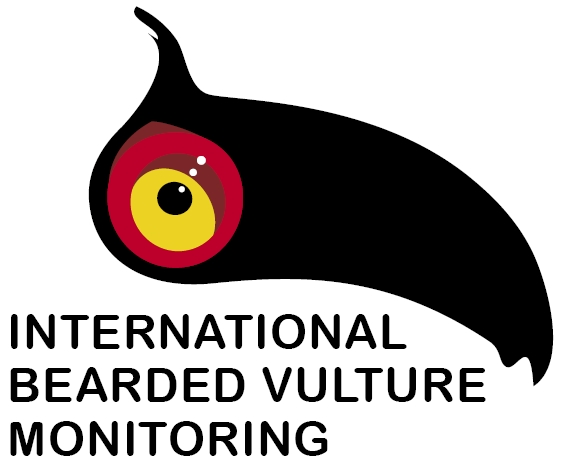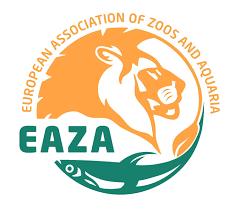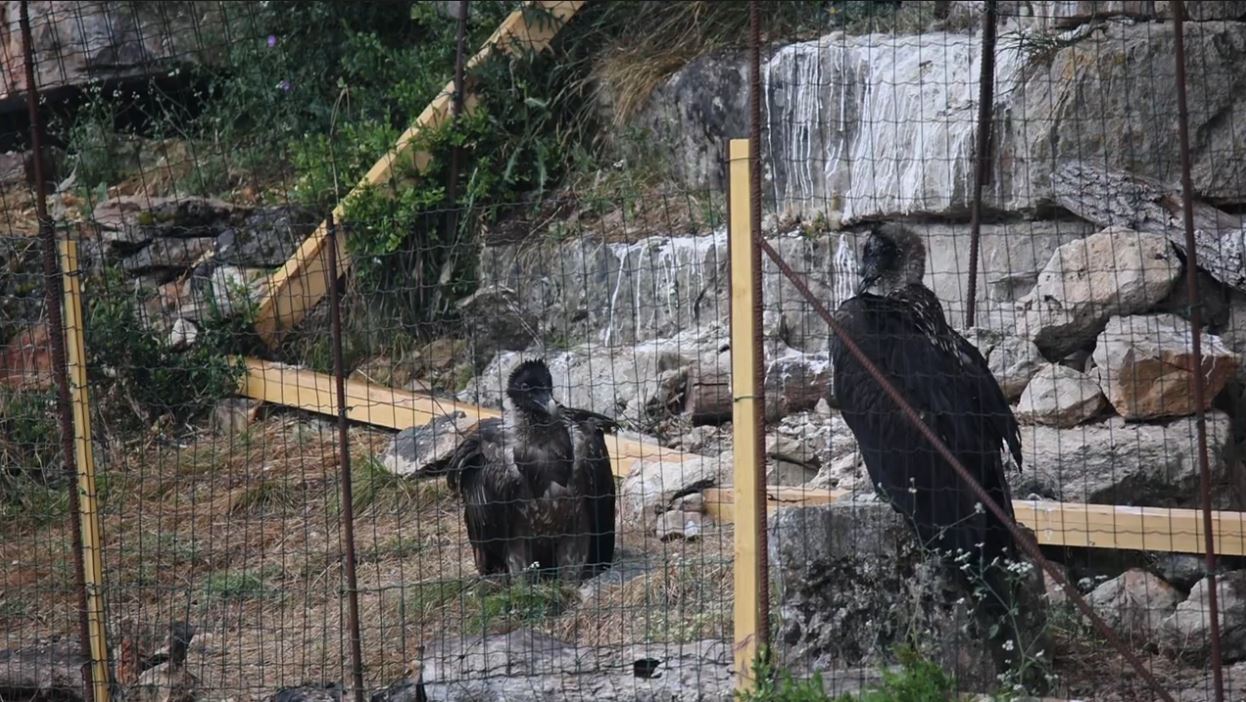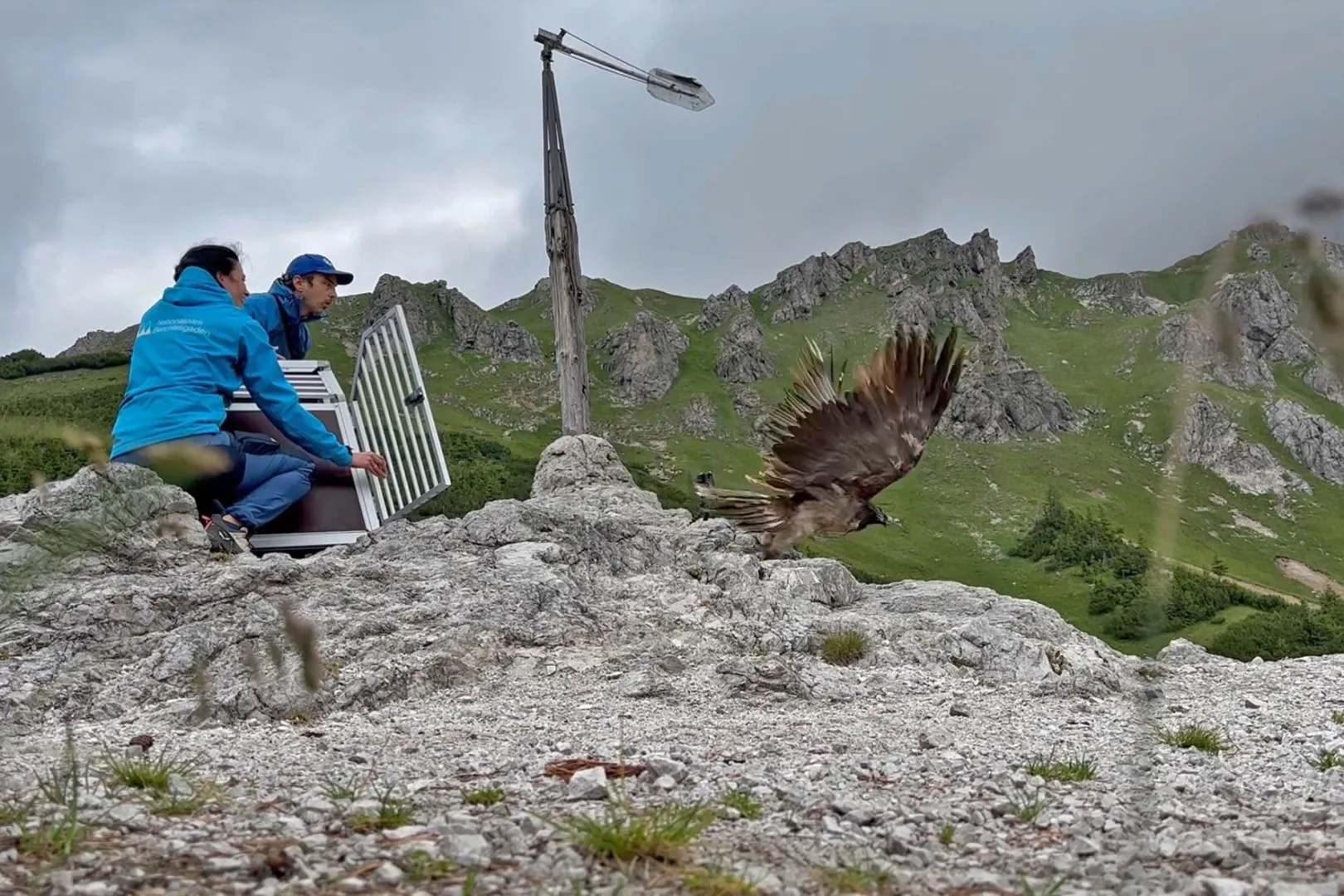Two young male Bearded Vultures (Gypaetus barbatus) were successfully released in the Klausbach Valley in Berchtesgaden National Park, Germany as part of the reintroduction project in the Alps. Curious locals and vulture fans from all over Germany came to witness as Wiggerl and Vinzenz started their lives in the wild.
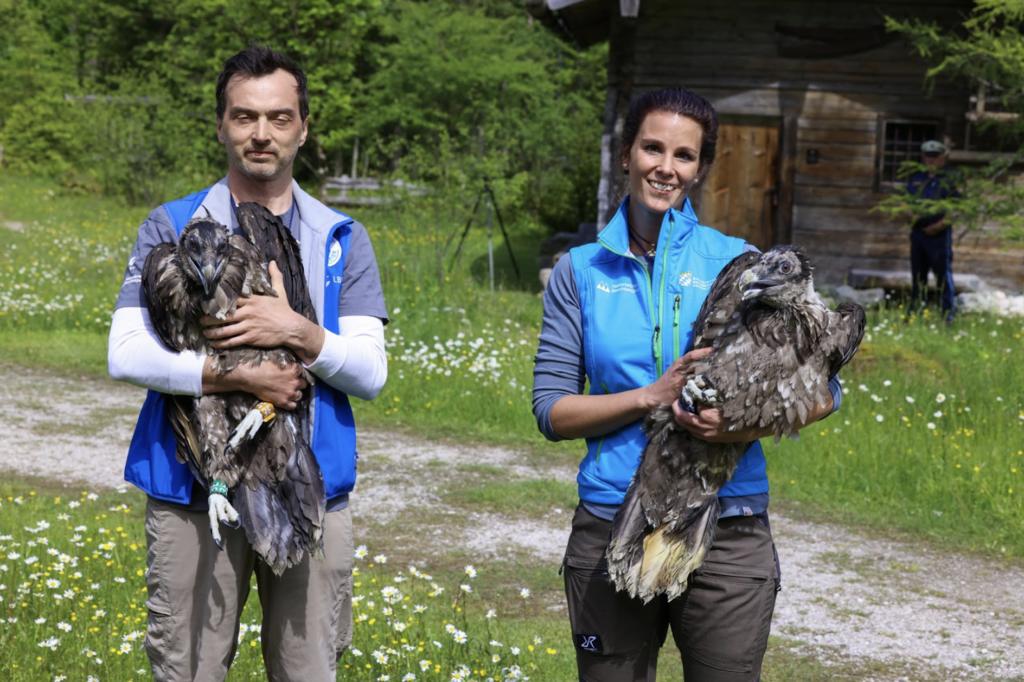
Project that has brought the Bearded Vultures back to Germany
The release was part of a ten-year long “Project Bartgeier” to bring the species back to the Bavarian Alps and, thus, consolidate the Central European and Alpine Bearded Vulture population and strengthen the connection with Asia. The project has been a historical turning point for Germany, where the species was extinct for over 140 years.
The project is the result of a strong collaboration between LBV and the Berchtesgaden National Park, with the support of the Bearded Vulture Captive Breeding Network, coordinated by us at the Vulture Conservation Foundation (VCF) on behalf of EAZA’s EEP (Bearded Vulture EEP), and the International Bearded Vulture Monitoring Network, also coordinated by the VCF.
Since 2021, two vultures have been released every year in the same release site in Berchtesgaden National Park.
- 2021: Bavaria & Wally
- 2022: Dagmar & Recka
- 2023: Sisi & Nepomuk
- 2024: Vinzenz & Wiggerl
In the first three years of the project, five female Bearded Vultures and one male were released into the wild. This year, for the first time, two males were released in the wild.
Bavaria, the Bearded Vulture released into the wild in 2021, has already settled very close to the national park. She may have already established a territory there in which foreign females will soon no longer be tolerated. Potential breeding partners are crucial to the success of the reintroduction project and therefore two males were released this year.
Preparing for the release
The Finnish bird “Wiggerl” was transported to Vienna by airplane. The day before the release into the wild, it was then transported by car to Berchtesgaden together with Austrian “Vinzenz” from the nearby Haringsee breeding station.
Before the release, the nests, made of spruce branches and sheep’s wool, were prepared by the team at LBV. The nests mimic the species’ wild nests and their natural fledging process. Placed at 1,300 metres of altitude in the Klausbach Valley, the nests are hardly accessible.
Release Ceremony
Hundreds of people came to witness the ceremony where Bavarian Prime Minister Dr. Markus Söder announced the names of the two birds. In his speech Mr Söder emphasized the importance of reintroducing the species and described the release of Bearded Vultures as a unique conservation effort. He noted that Bearded Vultures, once extinct in the Alps, now have a population of 300 and thanked everyone involved for their dedication.
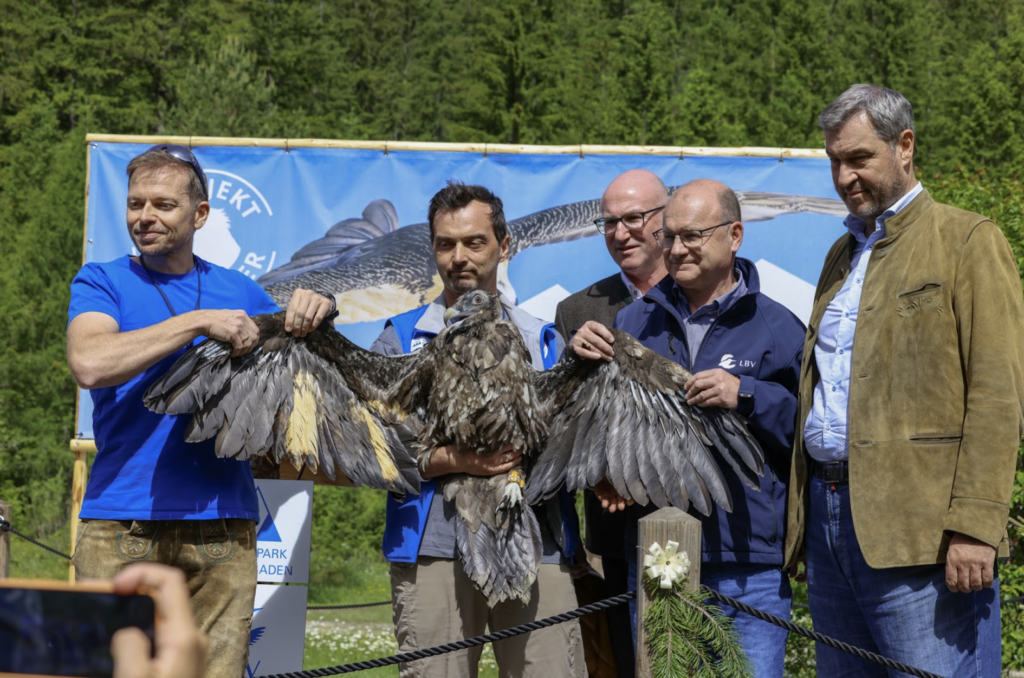
Meet Vinzenz
Vinzenz, a Bearded Vulture from the Richard Faust Center in Haringsee, Austria, was hatched on 3 March 2024. Despite hatching in the incubator, Vinzenz weighed 178 grams, making him the heaviest young bird in the Bavarian reintroduction project.
The young Austrian vulture was not raised by its biological parents because they were already taking care of another chick that had hatched earlier. For the foster pair that raised Vinzenz it was the first time to successfully raise a chick.
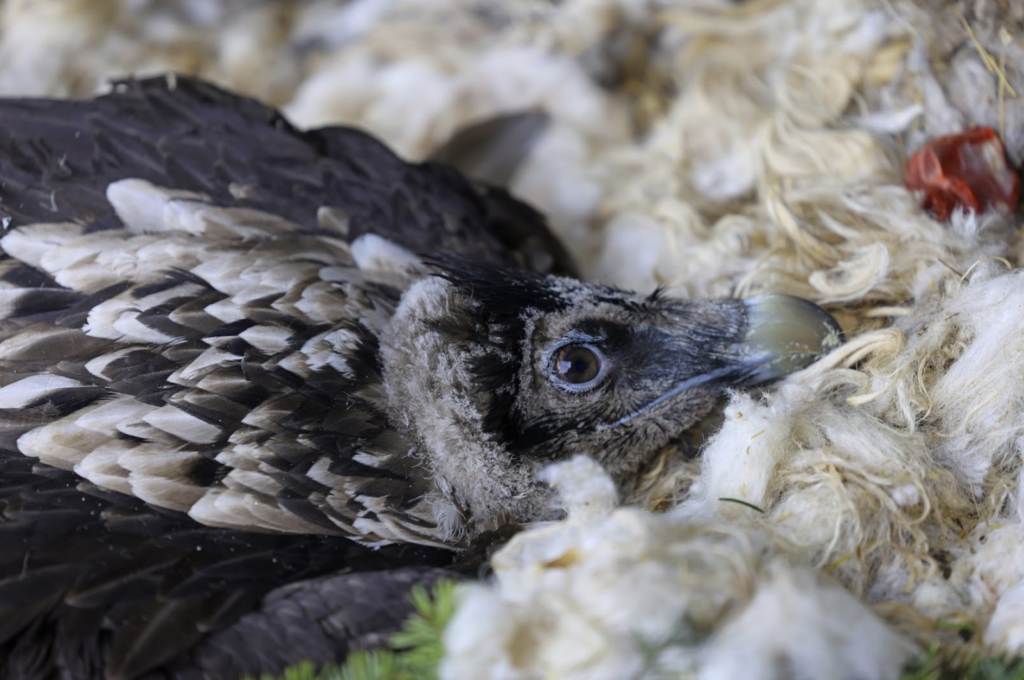
- Name code: BG 1277
- Origin: Richard Faust Center Haringsee
- Breeding name: unknown
- Hatching date: 03.03.2024
- Hatching weight: 178 g
- Parents: Father BG080 (born 1985, in the Alpine Zoo Innsbruck); mother BG 518 (born 2007, in Asters, France)
- Foster parents: Father BG 857 and mother BG 835
- Siblings: Brother BG 1218
- Ring color: blue/black
- Release into the wild: 29.5.2024
- Age at release: 88 days
Meet Wiggerl
Wiggerl, from Finland’s Helsinki Zoo, is the first Finnish bid to join the Alpine population. Hatched on 2 March 2024, Wiggerl is the chick of Europe’s northernmost Bearded Vulture breeding pair. Wiggerl’s older siblings were released in Andalusia and Corsica.
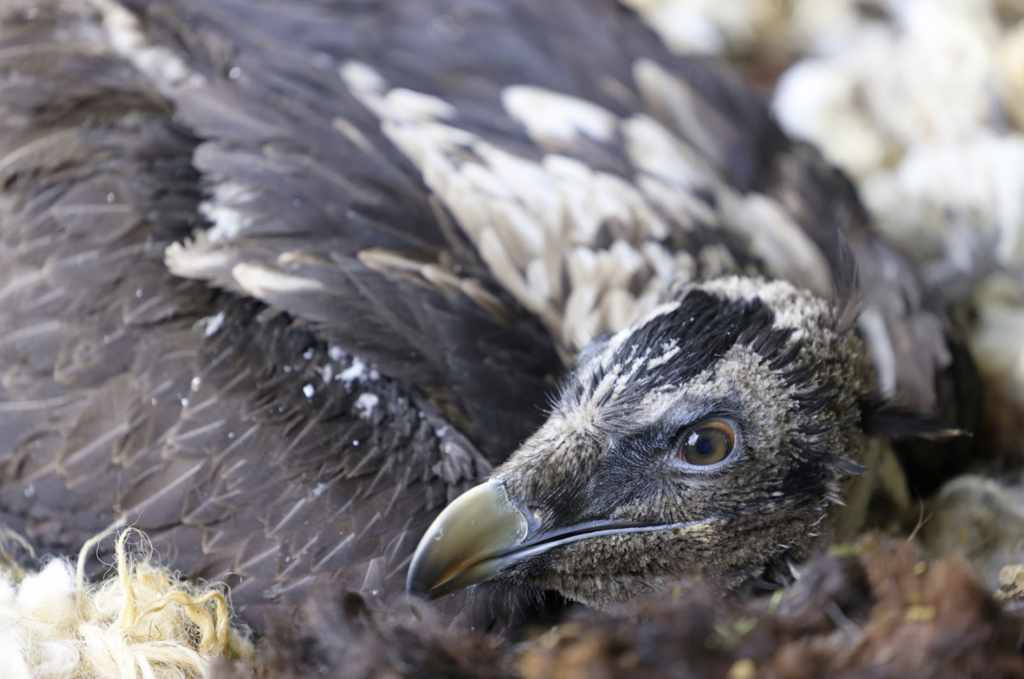
- Name code: BG 1240
- Origin: Helsinki Zoo
- Breeding name: Quotka
- Hatching: 02.03.2024
- Hatching weight: unknown
- Parents: Gandalf (2014 Asters) and Pamela (1997 Zoo Dresden)
- Siblings: Ángeles released in Andalusia in 2023 and Sulana released in Corsica in 2022
- Ring color: green/yellow
- Release into the wild: 29.5.2024
- Age at release: 89 days
Journey to the release site
After the ceremony, the national park and LBV employees placed the two young vultures in carrying boxes and carried them up the steep mountain to the place where they would be released. After the successful climb the vultures were placed in previously prepared nests. GPS transmitters were then attached to the birds, they were examined again, and the first food made of deer bones was placed nearby. Immediately afterwards, the team left to avoid human contact.
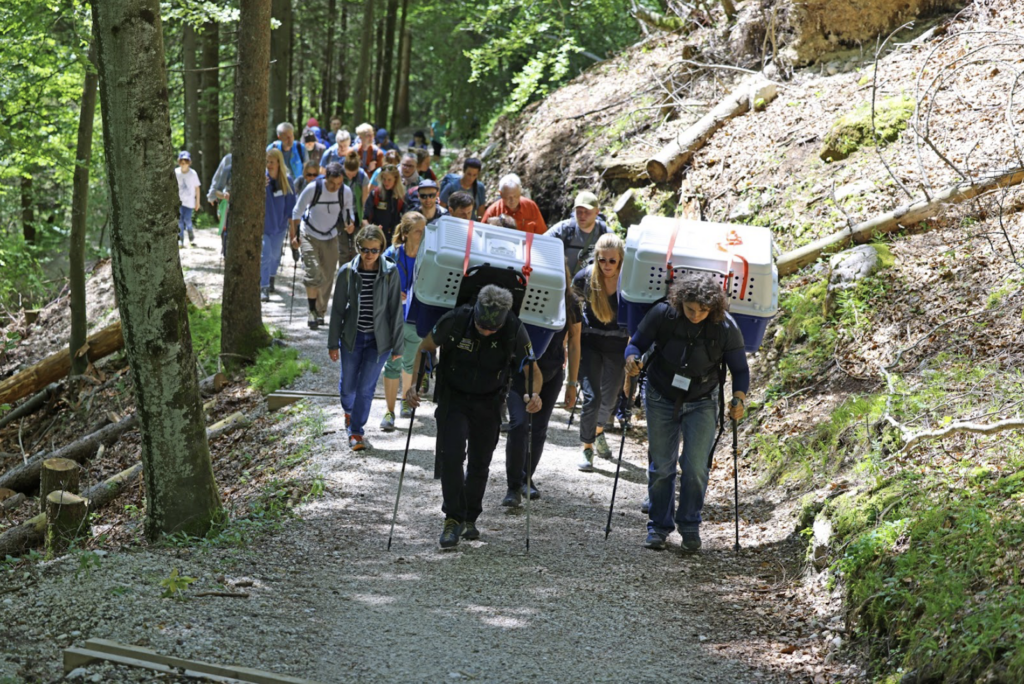
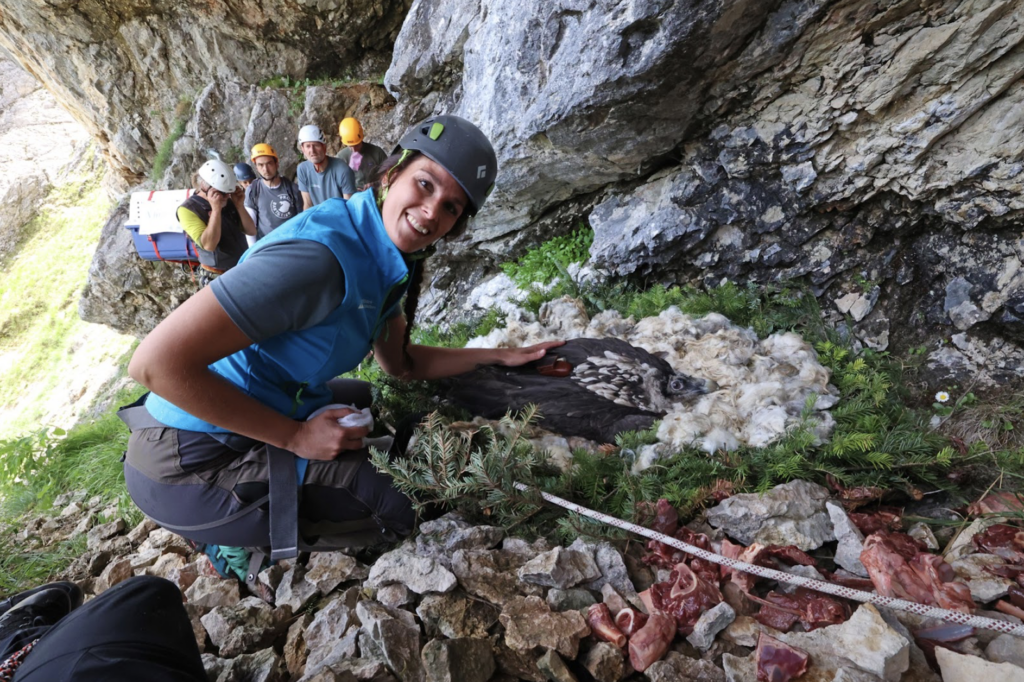
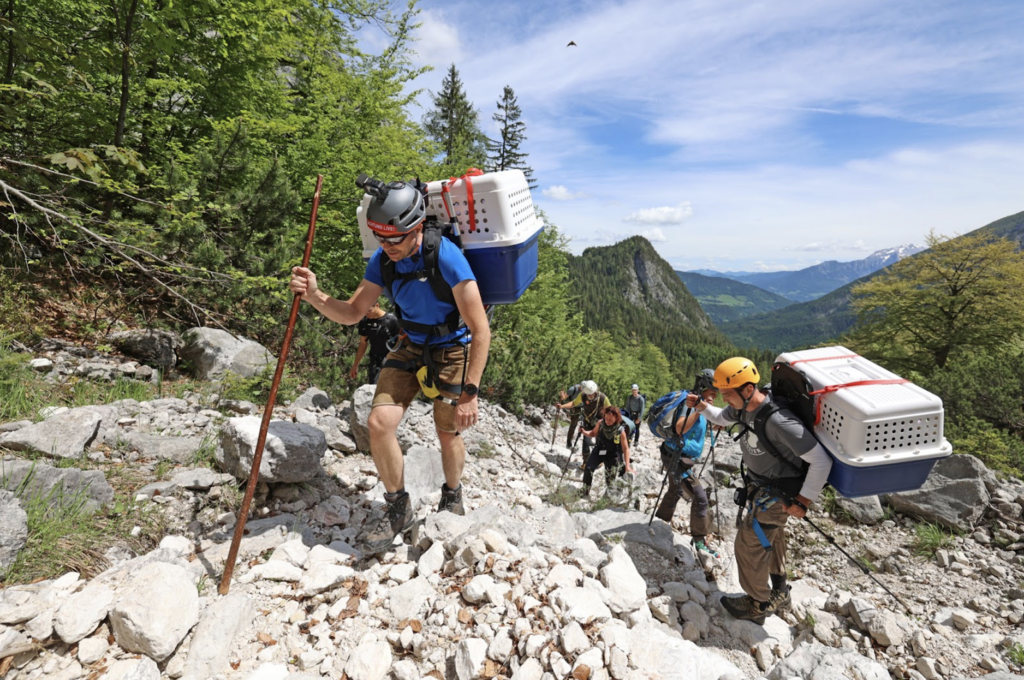
What happens next?
The vultures will now grow and train their wings without human contact, monitored by scientists through infrared cameras and a live stream around the clock from a nearby observation point.
The continuous observation enables the team to immediately recognize irregularities and offer the two birds optimal protection. The food will be laid out without direct human contact at intervals of several days. First ones in the monitoring shift are Katharina Kantor from the Berchtesgaden National Park and Sonja Deissler from LBV.
Anyone can join to follow how the two young bearded vultures develop and how they do their first flight exercises through a live Bearded Vulture webcam. The two birds’ first independent flight is expected to take place in about four weeks after extensive flight practice.
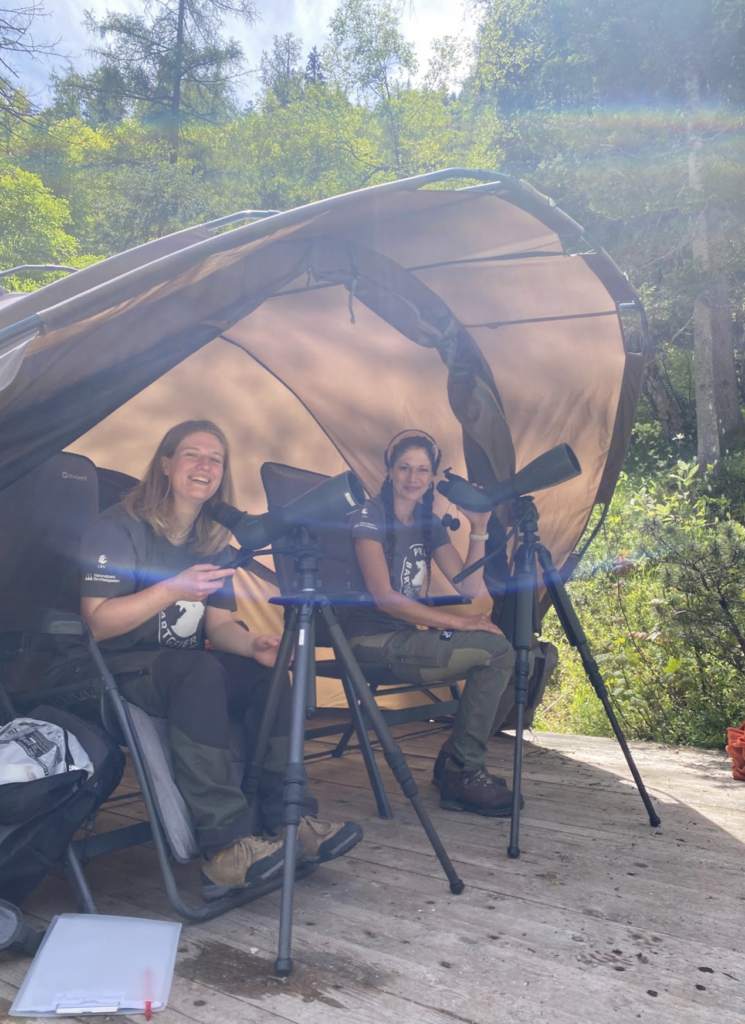
Bearded Vulture Reintroduction in the Alps
The species was driven to extinction in the Alps during the 20th Century, and to bring them back, pioneers from all Alpine countries initiated the reintroduction project in the 1970s. The first birds were released in 1986 at Hohe Tauern National Park (Austria), and in 1997 the first breeding pair successfully raised a chick in the wild in France. This reintroduction project has sparked the imagination and gathered the support of many stakeholders across the Alpine chain and is considered one of the best wildlife comeback stories of all time!
Now, with the releases of Bearded Vultures in the Bavarian Alps, Germany has become the fifth country to join this successful reintroduction project, an important milestone to promote the geographical expansion of the species towards the east and boost conservation measures in the region as a whole. Now, 140 years after humans eradicated them, the endangered giants are flying again through the skies of the German Alps.



